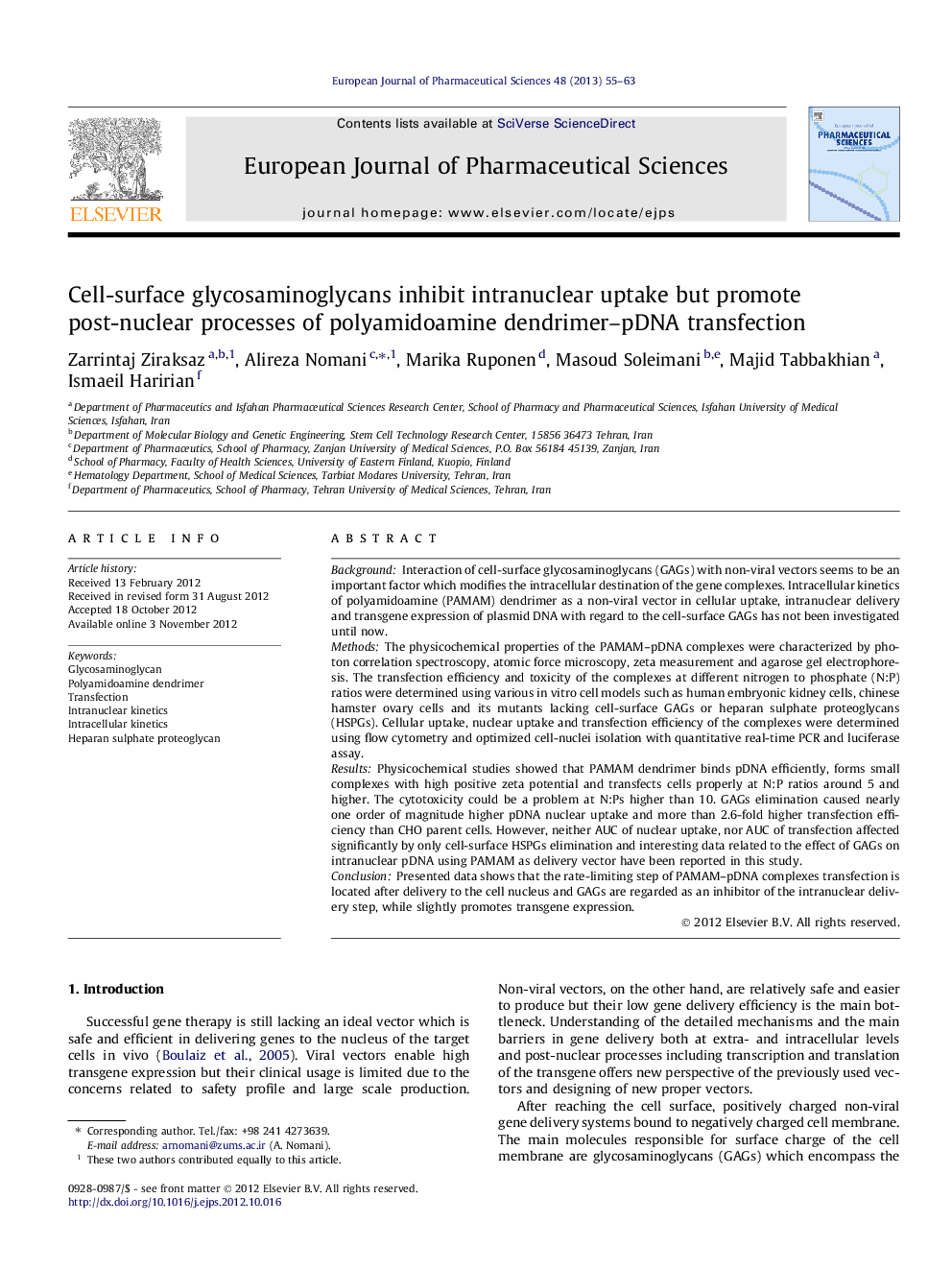| Article ID | Journal | Published Year | Pages | File Type |
|---|---|---|---|---|
| 2481018 | European Journal of Pharmaceutical Sciences | 2013 | 9 Pages |
BackgroundInteraction of cell-surface glycosaminoglycans (GAGs) with non-viral vectors seems to be an important factor which modifies the intracellular destination of the gene complexes. Intracellular kinetics of polyamidoamine (PAMAM) dendrimer as a non-viral vector in cellular uptake, intranuclear delivery and transgene expression of plasmid DNA with regard to the cell-surface GAGs has not been investigated until now.MethodsThe physicochemical properties of the PAMAM–pDNA complexes were characterized by photon correlation spectroscopy, atomic force microscopy, zeta measurement and agarose gel electrophoresis. The transfection efficiency and toxicity of the complexes at different nitrogen to phosphate (N:P) ratios were determined using various in vitro cell models such as human embryonic kidney cells, chinese hamster ovary cells and its mutants lacking cell-surface GAGs or heparan sulphate proteoglycans (HSPGs). Cellular uptake, nuclear uptake and transfection efficiency of the complexes were determined using flow cytometry and optimized cell-nuclei isolation with quantitative real-time PCR and luciferase assay.ResultsPhysicochemical studies showed that PAMAM dendrimer binds pDNA efficiently, forms small complexes with high positive zeta potential and transfects cells properly at N:P ratios around 5 and higher. The cytotoxicity could be a problem at N:Ps higher than 10. GAGs elimination caused nearly one order of magnitude higher pDNA nuclear uptake and more than 2.6-fold higher transfection efficiency than CHO parent cells. However, neither AUC of nuclear uptake, nor AUC of transfection affected significantly by only cell-surface HSPGs elimination and interesting data related to the effect of GAGs on intranuclear pDNA using PAMAM as delivery vector have been reported in this study.ConclusionPresented data shows that the rate-limiting step of PAMAM–pDNA complexes transfection is located after delivery to the cell nucleus and GAGs are regarded as an inhibitor of the intranuclear delivery step, while slightly promotes transgene expression.
Graphical abstractFigure optionsDownload full-size imageDownload high-quality image (118 K)Download as PowerPoint slide
